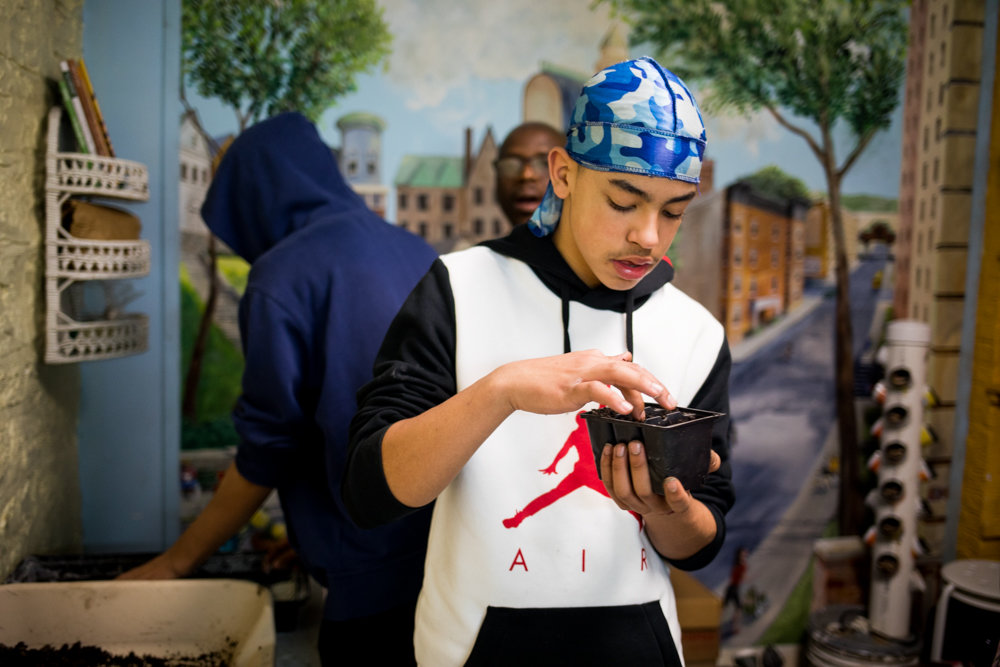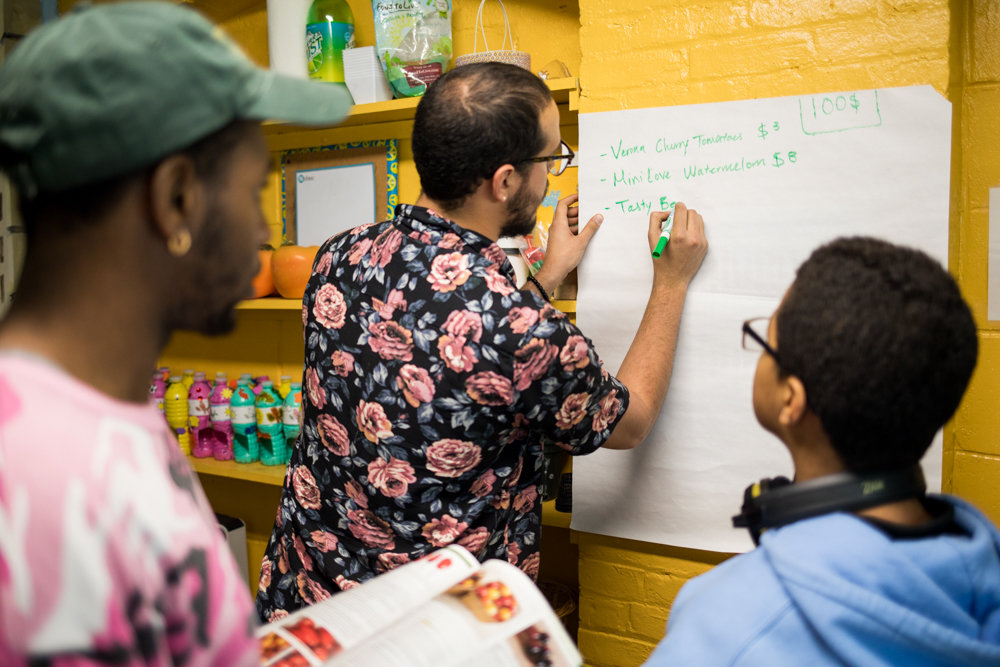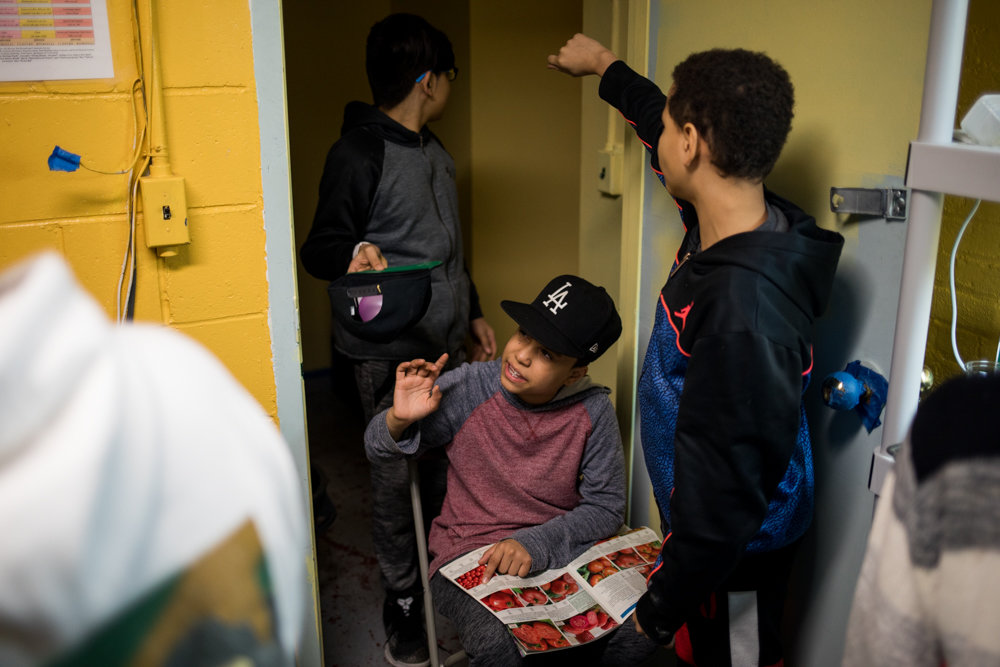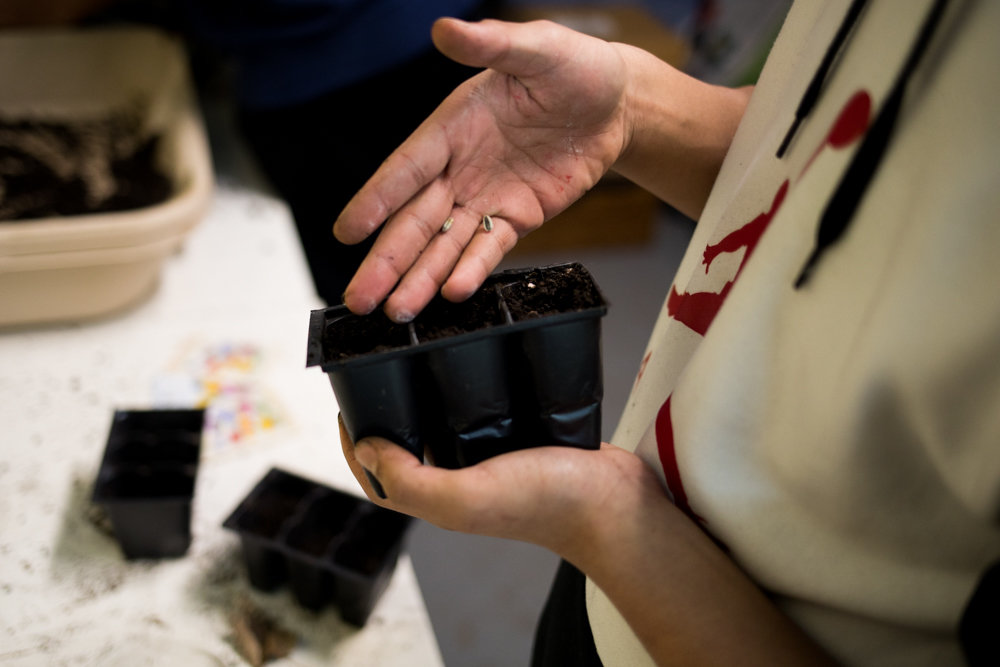Community, okra flourish in neighborhood garden
For Monique Hamilton, planting and harvesting in her urban garden verges on the sublime — from seeding to weeding to reaping vegetables, followed by winter’s lull, until frozen ground thaws and the cycle starts anew in spring.
As she describes it, it’s changed the way she and her family eat — and live — for the better.
“It’s awesome because we did it as a family,” said Hamilton, who’s called Kingsbridge Heights home for more than a decade. “We started from our seeds. We brought everything home. And we ate as a family. It’s very rewarding.”
Yet, as developers — and sometimes the city — destroy gardens, architectural relics, and other enclaves to develop affordable housing, office space and luxury retail, garden enthusiasts, activists and scholars are tackling a complex issue — balancing green space and crunched affordable housing availability in a constantly changing metropolis.
Starting young
But gardens are important, said Jason Bonet, who manages one at Kingsbridge Heights Community Center — where Hamilton actually tends a plot of her own — while overseeing its nutrition and food access program. Bonet describes KHCC’s garden as both a crucial food source, but also an oasis that brings the community together through festivals, volunteer events, even staff barbecues on balmy summer afternoons.
“It isn’t easy to find a spot where you can just kind of relax and take in all this nature,” Bonet said. “We do have a lot of nature and ecology happening around us. But to be able to sit down in a place and take a little reprieve from the busyness that we live in — I think that’s the importance of this garden as a green space.”
But the nutritional aspect — growing vegetables and fruits “straight from the ground” — also is prime.
“We’ve realized that once kids are kind of in their teens and tweens, they already have an opinion on produce, on veggies,” Bonet said. “They know that they’re not going to like anything green.”
That’s why it’s important to start sowing seeds, so to speak, “super-young,” as early as 3 or 4 years old, Bonet said. Not just giving them a firsthand look at the so-called seed-to-plate process, but also a shot at rolling up sleeves and getting hands dirty from the get-go.
“We don’t just have a garden for fun,” Bonet said. “Our participants are completely a part of the program, weeding, planting, harvesting — all that good stuff. They’re seeing this at a very young age and it sheds this positive light on veggies as they grow up.”
A future garden?
The ultimate purpose of that is ending cycles of obesity, a disease Bonet says has become particularly pernicious in Kingsbridge Heights.
To be sure, at least one potential garden spot not far from KHCC seems stuck in limbo, at Fort Independence Avenue and Bailey Place. There a curious sign proclaims “beautiful green street garden coming soon to this site,” with what appears to be the city’s parks department’s logo at its bottom corners. At the moment, however, the area looks more like a mini wasteland of sorts, while some neighbors say the sign has been there for a very long time — but still no actual garden.
Despite the logo, the city’s parks department didn’t sanction the sign or plant it there, nor have they plans to cultivate any sort of community garden at the spot, spokeswoman Anessa Hodgson told The Riverdale Press.
In fact, the site isn’t even under the parks department’s jurisdiction, Hodgson added. Rather, it was constructed as part of an infrastructure project by the city’s design and construction department, and planted by the parks department — but parks doesn’t handle its maintenance.
A DDC spokeswoman referred a reporter’s questions about the sign to the city’s transportation department, where a spokeswoman said DOT “will work with” the parks department on “exploring plans for the space.”
While the fate of that particular plot remains unclear, luckily for KHCC’s gardeners, the land their plots cover is completely owned by the community center, meaning KHCC has complete say over what happens to the garden, Bonet said. Part of it used to be a large parking lot — until last year when, over the course of several days, it was totally transformed into a verdant patch of trees, shrubs, lawn and mulch.
Bringing people together
Significantly, KHCC serves a predominantly Latino/Latina community, said Bonet, who actually was born in Puerto Rico but moved to the city at a young age. For some, adjusting to the northwest Bronx from a place where stunning natural terrain and plucked-from-the-branch fruit is the norm can be difficult.
“That difference in how much nature you’re seeing and what you’re being surrounded by is shocking,” Bonet said. But renting a plot in the community garden certainly can help.
“They can kind of grow whatever they want, and they’re like ‘Oh, I used to do this in the Dominican Republic,’ or ‘I used to do this in Mexico,’ all the time,” Bonet said. “They come to the community garden and plant, and feel like they’re at home again.”
And even if preserving gardens, building affordable housing and other development ambitions sometimes clash, Bonet believes they shouldn’t.
“I can understand how people would see it as a competition,” Bonet said. “Especially people who are thinking, ‘I need somewhere to live. I’m not going live in a community garden. That’s not going to give me one of my basic human rights.’”
But rather than competing, those various goals ought to work in tandem.
“New York City is known for having all these lots and empty areas and land that isn’t being used for anything, whether it be affordable housing or green spaces,” Bonet said. “I think that green spaces are very much necessary. For the ecology of New York City, but also for the mental — and physical — health of the people living in these areas.”
For Hamilton, the garden makes life richer in more ways than one, whether its yielding fresh okra for supper, a spot to catch up with neighbors, or offering her kids a place to let loose in summer. For that, she’s thankful they live just five minutes away, especially as they gear up for spring.
It’s been eye-opening for both Hamilton and her kids.
“It was something that I’ve never done before,” Hamilton said. “It was a learning process, and I’ve learned a lot from it. But I just took advantage of the opportunity — and I’m glad I did, because it’s amazing.”















